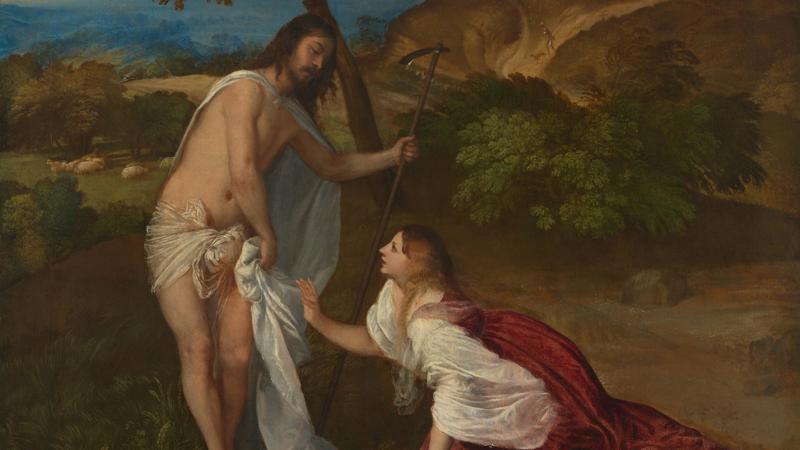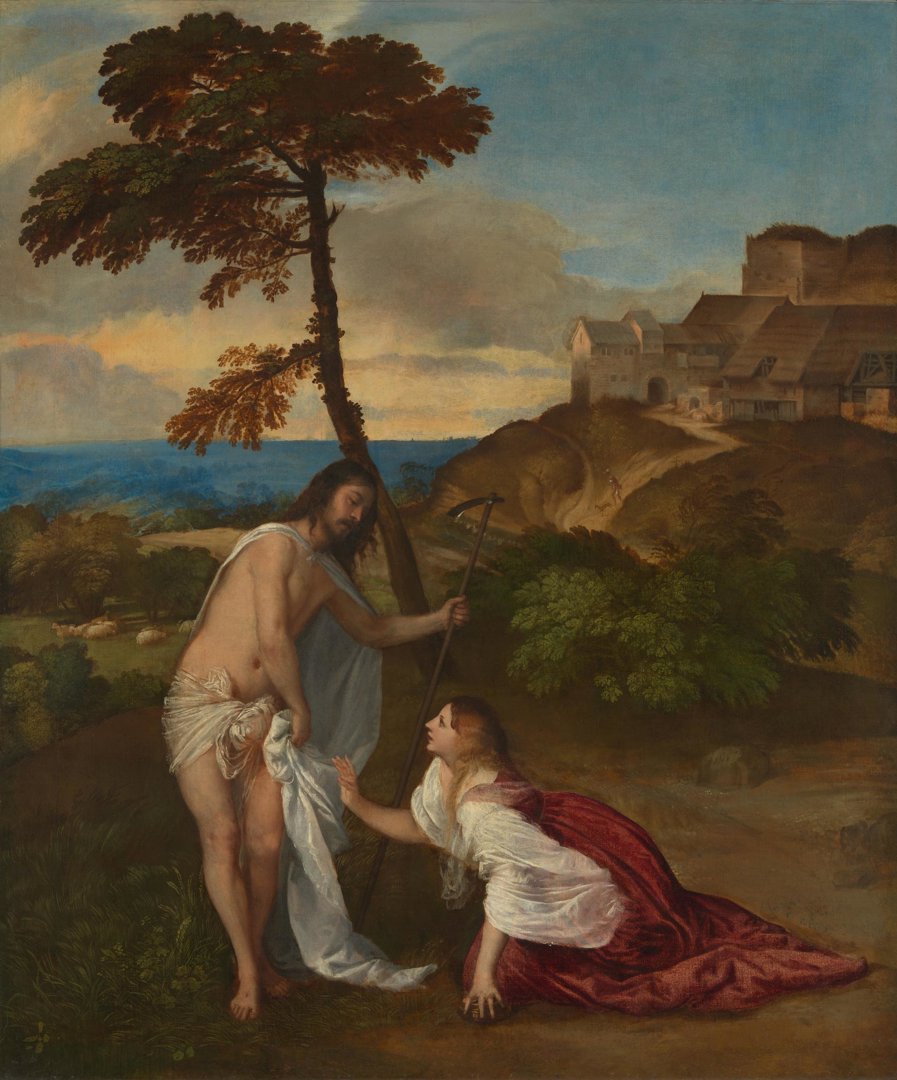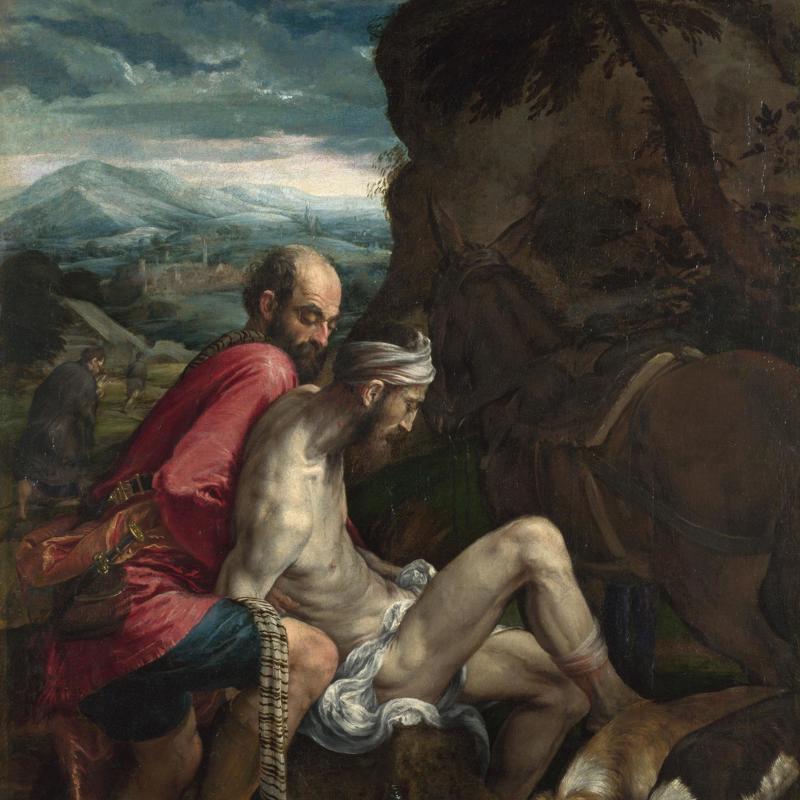Mantegna approached landscape with the focus of an archaeologist. He pays close attention to the rock formations of the mountainside and the geological strata of the terrain of this imaginary landscape.
There is a sense of structure even to the evenly dispersed clouds drifting in the sky. His antiquarian interests are evident in his visualisation of Biblical Jerusalem nestled on the mountain, replete with amphitheatre and triumphal column. This suggests a parallel between the logic of God’s creation of nature with the design principles of classical antiquity.
Bellini adapted his composition from that of his brother-in-law Mantegna, taking a fundamentally different approach to his visualisation of nature.
His landscape is defined by organic, undulating forms, almost liquid in their articulation. Everything is suffused by the glow of dawn, catching the ripples on the water, illuminating the white blocks of the buildings on the hill, and tingeing the clouds an orangey pink.
It is an imaginary landscape, but one based on observation: nature as conceived by a visually sensitive artist brought up with the canals and waterways of Venice – a place of perpetual change.
At this late stage of his career, Giovanni Bellini had developed a painterly vocabulary to evoke the sway of treetops in the wind, bright light filtering through foliage and the luminous blur of meadowland glimpsed through trees.
His freedom of touch and power of suggestion here seems to anticipate the painterly approach of the impressionists more than three centuries later.
Bellini had also grown more attentive to specific locations, elements of which he would bring to his paintings: the landscape here evokes that around Verona, Peter Martyr’s home city, including the bright boulders littering the banks of the River Adige. This choice of setting has spiritual significance: the light reflects the presence of God, while the trees being cut bleed in analogy with Peter’s martyrdom.
Titian understood from Bellini the importance of capturing the sense of being present in nature to inspire spiritual engagement. His approach is more dynamic, even heroic, than Bellini’s contemplative mode.
Mary Magdalen’s encounter with the Resurrected Christ on Easter morning here takes place against a bright sunrise, the mists of morning dissipating on the horizon as the land warms up. Christ’s twisting pose is reinforced by a tree, rising energetically towards the sun.
Titian here draws upon traditional symbolism where trees were associated with Christ's ancestry and return to life. He also mobilises the sloping landscape to accentuate the balletic interaction between the figures.
Jacopo Bassano was nicknamed after his hometown, Bassano del Grappa, on the River Brenta in the foothills of the Alps. He explored its terrain with great passion in his art.
His interest in the realities of the countryside stands in contrast to Titian’s more elevated tone. Here, dawn breaks through grey clouds in what could be the Brenta Valley, lending a silvery shimmer to the morning mist. There is a soothing coolness to the light; fully in keeping with the picture’s theme of mercy.
The copper green that Bassano used for much of the foliage has darkened with time, just as one of the blue pigments Bassano used for the sky, azurite, has taken on a greener aspect than intended.
In the latter part of his career, Titian developed an increasingly expressive way of painting: deepening colours, dissolving forms and broadening brushstrokes.
This picture, finished when he was in his 80s, is at once deeply retrospective and radically innovative. He adapts the screen of trees established as a convention in Venetian art by Bellini, notably in the Assassination of Saint Peter Martyr.
Titian’s trees, however, sway violently in the wind, shown as a tempestuous patchwork of greens, yellows and earth tones. Water rushes behind Diana and the barking hound, the latter blurred in violent movement. In front, a bush is an explosion of yellow paint. The very way the landscape is painted captures the passion of the human drama of Actaeon’s death.
















